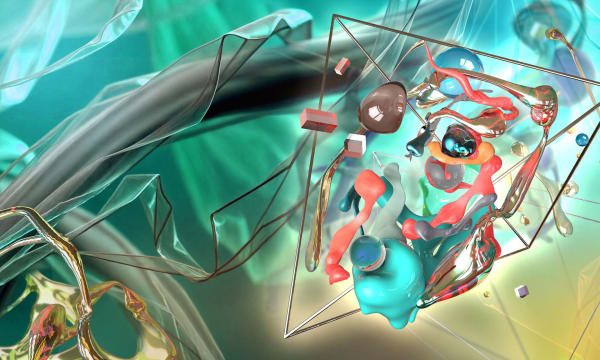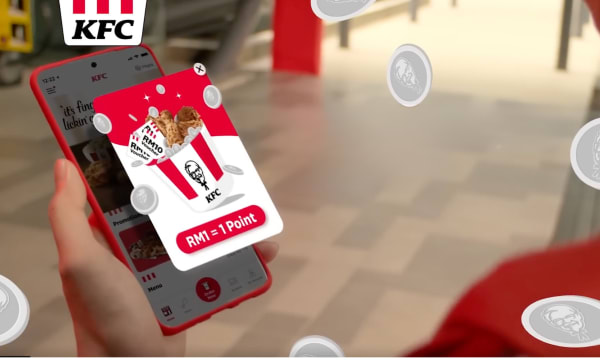## Level Up Your Audience: VML’s Trifecta of Sport, Experience, and Entertainment
Forget passive viewing. Imagine stepping into the heart of the action, feeling the roar of the crowd, and becoming part of the story. This isn’t a fantasy, it’s the reality VML is crafting for brands across the globe.

VML, a global creative agency, has mastered the art of blurring the lines between sport, experiential marketing, and entertainment. They’re no longer just creating memorable campaigns, they’re building immersive worlds where fans connect with brands on a deeper, more visceral level.

Gamification of Senses: Practical Applications and Case Studies of Sensory Storytelling in Games and Interactive Experiences
Sensory Immersion: Beyond Sight and Sound

In a world increasingly dominated by digital experiences, the ability to engage multiple senses is crucial for creating truly immersive and memorable interactions. Gamification of senses takes this concept to the next level, leveraging touch, smell, taste, and even temperature to enhance storytelling and player engagement.
A prime example of this is the Smell-O-Vision project by the University of Washington. This innovative technology uses scent to augment film and gaming experiences, allowing viewers to smell the aroma of rain, gunpowder, or even freshly baked bread during specific scenes. By triggering olfactory responses, the technology creates a deeper emotional connection and a heightened sense of realism.
Another compelling case study is the “Dinner Party” experience by artist Rafael Lozano-Hemmer. This interactive installation uses sensors to detect participants’ breath and body temperature, triggering a personalized soundscape and lighting display. The result is a unique and intimate sensory experience that invites reflection and personal exploration.

Sensory Storytelling: A New Frontier
The potential applications of sensory storytelling in gaming and interactive experiences are vast. Imagine exploring a virtual world where you can feel the texture of the environment, smell the scent of blooming flowers, or taste the flavors of exotic fruits. This level of sensory immersion has the potential to revolutionize the way we experience and interact with digital content.
Brands can leverage sensory storytelling to create more engaging and memorable campaigns. For example, a food brand could partner with a game developer to create an interactive experience where players can virtually taste different flavors and textures. This type of immersive experience could create a stronger emotional connection with consumers and drive brand loyalty.

The Metaverse and Beyond: Delving into the Potential of Spatial Computing, AI, and Accessible Creation Tools to Reshape the Future of Entertainment
Spatial Computing: Redefining the Boundaries of Reality
Spatial computing represents a paradigm shift in how we interact with technology. By blending the physical and digital worlds, spatial computing creates immersive and interactive environments that blur the lines between reality and virtuality. Think of it as the next evolution of gaming, where players can not only see and hear but also feel and interact with their virtual surroundings.
Companies like Microsoft with its HoloLens and Magic Leap’s mixed-reality headsets are leading the charge in spatial computing, developing technologies that enable users to overlay digital content onto the real world. Imagine attending a virtual concert in your living room, interacting with digital avatars, or collaborating on projects with colleagues from around the globe in a shared virtual space. These are just a few of the possibilities that spatial computing offers.
AI: The Engine of Personalized Experiences
Artificial intelligence (AI) is playing an increasingly crucial role in shaping the future of entertainment. AI-powered algorithms can personalize gaming experiences, create dynamic and responsive narratives, and even generate new content based on player preferences. This level of customization and interactivity enhances engagement and creates a truly unique experience for each individual.
For example, AI-powered chatbots can provide in-game guidance, respond to player queries, and even engage in role-playing scenarios, adding a layer of depth and personalization to the gaming experience. AI algorithms can also analyze player behavior and preferences to tailor game difficulty, suggest new quests, or even generate personalized storylines, ensuring that each player feels uniquely engaged and challenged.
Accessible Creation Tools: Empowering the Next Generation of Creators
One of the most exciting aspects of the future of entertainment is the rise of accessible creation tools. These tools empower individuals with diverse backgrounds and skillsets to create their own games, experiences, and virtual worlds. This democratization of content creation has the potential to unleash a wave of innovation and creativity, leading to a more diverse and inclusive entertainment landscape.
Platforms like Unity and Unreal Engine offer user-friendly interfaces and robust functionalities, allowing users to build complex 3D environments, characters, and interactive experiences without requiring extensive coding expertise. This accessibility opens up endless possibilities for individuals to express their creativity, share their stories, and build communities around their creations.
Interactive Storytelling: How These Technologies Empower Brands to Create Personalized and Participatory Gaming Experiences
Beyond Passive Consumption: Engaging Audiences Through Interaction
The traditional model of brand storytelling, where consumers passively absorb information, is becoming increasingly ineffective in today’s attention-saturated environment. Interactive storytelling offers a powerful alternative, empowering brands to create immersive experiences that encourage active participation and engagement.
Through games and interactive experiences, brands can tell their stories in a more dynamic and engaging way. Consumers become active participants in the narrative, making choices that shape the story’s direction and outcomes. This level of agency and personalization fosters a deeper connection with the brand and its message.
Gamification: Driving Engagement and Building Loyalty
Gamification, the application of game mechanics to non-game contexts, is another powerful tool for driving engagement and building brand loyalty. By incorporating elements like points, badges, leaderboards, and challenges, brands can motivate consumers to interact with their content, products, or services in a more meaningful way.
For example, a fitness brand could create a mobile app that gamifies exercise routines, rewarding users for their progress and encouraging them to achieve their fitness goals. A retail brand could use gamified loyalty programs to incentivize repeat purchases and build customer retention.
Personalized Experiences: Creating Meaningful Connections
The ability to personalize experiences is a key differentiator in today’s competitive market. Brands that can tailor their interactions to individual consumer needs and preferences are more likely to build lasting relationships.
Through interactive storytelling and gamification, brands can create personalized experiences that resonate with individual consumers. By leveraging data and AI, brands can understand their customers’ interests, preferences, and behaviors, and tailor their content and interactions accordingly. This level of personalization creates a sense of value and exclusivity, fostering stronger connections with consumers.
The Future of Play: Speculating on the Implications of World-Conjuring Tech for the Gaming Industry and Beyond
A Convergence of Reality and Virtuality
The convergence of spatial computing, AI, and accessible creation tools has the potential to revolutionize the gaming industry and reshape the very notion of play. Imagine a future where games seamlessly blend with our physical world, where we can interact with virtual characters and objects in our own homes, and where anyone can create their own immersive experiences.
This convergence will blur the lines between reality and virtuality, creating new opportunities for social interaction, collaboration, and entertainment. Games will no longer be confined to screens; they will become integrated into our everyday lives, enriching our experiences and expanding our possibilities.
New Business Models and Creative Opportunities
World-conjuring tech will also create new business models and creative opportunities for the gaming industry. As the lines between physical and digital worlds dissolve, we can expect to see the emergence of new genres, formats, and platforms.
For example, think of location-based games that utilize real-world environments as part of the gameplay, or games that allow players to interact with each other and the world around them in real-time. The possibilities are truly limitless.
Ethical Considerations and Social Impact
As we venture further into this uncharted territory, it is crucial to consider the ethical implications of world-conjuring tech. Issues such as data privacy, virtual identity, and the potential for addiction must be carefully addressed to ensure that these technologies are used responsibly and for the benefit of society.
It is also important to consider the social impact of these technologies. How will they affect our relationships, our sense of community, and our understanding of reality? As with any powerful technology, it is essential to have open and honest discussions about the potential benefits and risks of world-conjuring tech to ensure that it is used in a way that is both innovative and ethical.
VML’s Winning Formula: Creativity, Strategy, and Recognition
Industry Accolades: Highlighting VML’s Recent Success at The Drum Awards Festival and its Impact on the Marketing Landscape
VML, a global creative agency specializing in brand experiences, recently made a significant splash at The Drum Awards Festival. The agency garnered more than three dozen awards across a range of categories and creative disciplines, solidifying its position as a leader in the marketing industry.
This impressive feat includes a Grand Prix, two Chair’s Awards, 15 Gold, 14 Silver, and seven Bronze awards. The Drum Awards Festival, renowned for its rigorous judging process and esteemed jury composed of 700 industry professionals, recognizes outstanding work, companies, and individuals across marketing and media.
A Commitment to Excellence: Exploring VML’s Approach to Crafting Innovative and Effective Campaigns in the Sports, Experiential & Entertainment Sectors
VML’s success can be attributed to its unwavering commitment to delivering innovative and effective campaigns that resonate with audiences on a deeper level. The agency’s approach is characterized by a deep understanding of consumer behavior, a passion for creativity, and a strategic focus on delivering measurable results.
With a proven track record of success in the Sports, Experiential & Entertainment sectors, VML has a knack for creating memorable experiences that leave a lasting impact. Whether it’s crafting immersive brand activations, developing engaging content for social media, or designing interactive games, VML consistently pushes the boundaries of creativity and innovation.
The Gamestanza Connection: Analyzing How VML’s Strategies Can Inspire and Inform the Future of Gaming Marketing and Experiences
For Gamestanza readers, VML’s success story offers valuable insights into the future of gaming marketing and experiences. VML’s emphasis on immersive storytelling, personalized interactions, and the use of emerging technologies like spatial computing aligns perfectly with the trends shaping the gaming landscape.
By embracing these strategies, gaming marketers can create more engaging and meaningful experiences for their audiences, fostering brand loyalty and driving business growth.
Conclusion
Conclusion: Revolutionizing the Intersection of Sport, Experiential, and Entertainment with VML
As we conclude our exploration of VML’s innovative approach to the intersection of sport, experiential, and entertainment, it’s clear that this agency is at the forefront of a revolution that’s redefining the way we experience and engage with sports and live events. From leveraging data-driven insights to create immersive brand experiences, to harnessing the power of technology to enhance fan engagement, VML’s expertise has been instrumental in driving business growth, enhancing fan experiences, and reimagining the future of sports marketing. Our discussion has highlighted the agency’s commitment to delivering cutting-edge solutions that seamlessly blend the worlds of sport, experiential, and entertainment, resulting in unparalleled brand equity and customer loyalty.
The significance of this intersection cannot be overstated. As the sports and entertainment industries continue to evolve at an unprecedented pace, the need for innovative, experiential, and immersive experiences has never been greater. VML’s pioneering work in this space has significant implications for brands, teams, and leagues looking to stay ahead of the curve and connect with their audiences in meaningful ways. As the lines between sport, experiential, and entertainment continue to blur, we can expect to see even more groundbreaking initiatives and collaborations that push the boundaries of what’s possible.
As we look to the future, it’s clear that the intersection of sport, experiential, and entertainment will only continue to grow in importance. VML’s commitment to innovation, creativity, and customer-centricity will undoubtedly play a significant role in shaping the industry’s trajectory. As we close this chapter, we’re left with one pressing question: what’s next? How will the intersection of sport, experiential, and entertainment continue to evolve and captivate audiences worldwide? One thing is certain – with VML at the helm, the future looks brighter than ever.